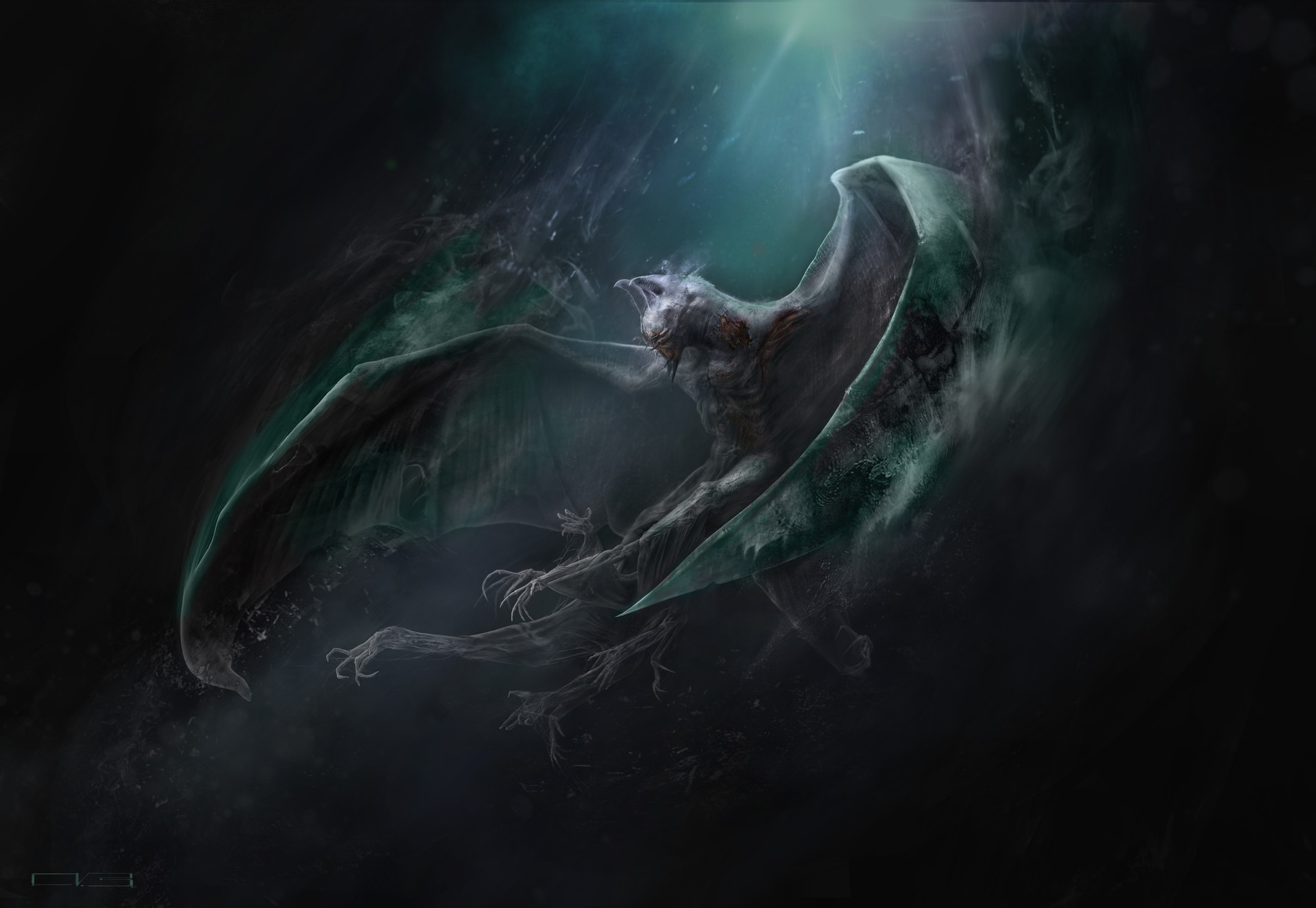Historical accounts of Christian missionaries visiting the islands during the 15th to 16th century narrate how a winged monster has raided and terrorized the village of Uraur in Seram Island, one among many in the chain of islands in the Mollucas, Indonesia.
The residents fear the creature, as it is known to abduct infants and children when it feeds at night. The monster is also said to raid nearby villages. According to these locals, the Orang Bati lives during the daytime on Mount Kairatu, a dormant volcano with a network of deep caves on the island of Seram.

The Orang Bati has an ape-like body, much like a human standing four to five feet tall, with red skin on its body. The creature has large black leathery wings and a long tail, compared to rhamphorhynchoid species of flying dinosaurs or pterosaurs. Some accounts describe the wings and tail as covered with thick black fur. Villagers often hear the Orang Bati's arrival by the sound of its shrill wail, similar to that of pterosaurs.

One of the most mentioned accounts of the Orang Bati was that of the English missionary named Tyson Hughes, who went to the Moluccas to help the villagers with their farming systems in 1987. At first, the British man was skeptical about the Orang Bati and the stories the locals tell. During his 18 month mission, Hughes and the rest of his team admitted that the village tales were actually true.
Comparable creatures have been said to exist in nearby Southeast Asian and Pacific regions, such as Vietnam and the Philippines. Another version of the Orang Bati, called the ahool in Java, is described as possibly being a giant bat. The same description applies for residents of the Philippines, where they believe giant bats to be responsible for killing livestock in the villages. First thought to be flying monkeys, these versions of the Orang Bati could possibly be a cross between birds and bats, possibly even large eagles.

A similar large flying creature has also been sighted in several regions around the world. In these accounts, however, the creature is not mammalian nor does it resemble humanoid forms. Paleontologists, or those who study prehistoric animals, find that these creatures resemble the flying dinosaurs, so they are more reptilian or avian rather than mammal.
The kongamato of Zambia in Central Africa have been described as large flying animals with reddish complexion and with wings covered in leathery skin. The kongomato was also sighted in Rhodesia, Angola, and the Congo. In Papua New Guinea, however, this creature's name is ropen, which means flying demon in the vernacular. Accounts from the natives claim that the ropen also eats human flesh.

The natives of Seram, however, insist that their night sky is infested with soaring simians, which they describe as being approximately 5-feet in height. These creatures are also said to bear black, leathery wings, red skin, and a long, thin tail.
Aboriginals have further claimed that these animals emit a long “mournful wail” while on the prowl. The description of the “leathery wings” and “blood-red skin” might indicate a gigantic bat-like creatures like the Olitiau.

As if to confirm this fact, the name “Orang-Bati” itself translates from the indigenous language of the Moluccan’s as “men with wings.” Still, some investigators insist that the description of these animals seems to be more in line with that of its Papua New Guinea cousin, the Ropen. This fact also seems to coincide with the purported habitat of the Orang-Bati, which, much like that of the Ropen, consists of a network of caves wedged deep into the side of a now extinct Mount Kairatu.
Well, what do you think?
It is sometimes thought to be an undiscovered species of giant bat, with a face resembling that of a monkey. Many bats have oddly shaped faces, so this theory seems more likely.
Source and reference :
Exploration of the Orang Bati by Robert Benjamin



















